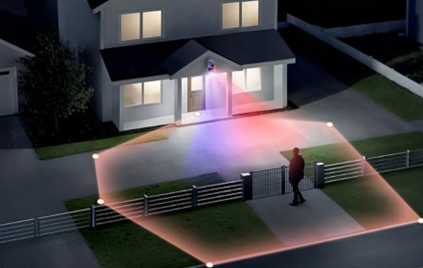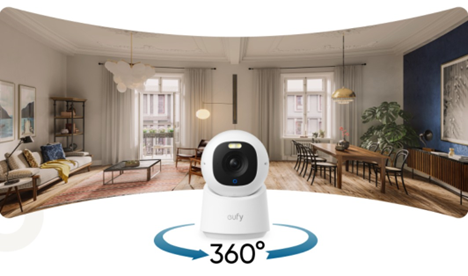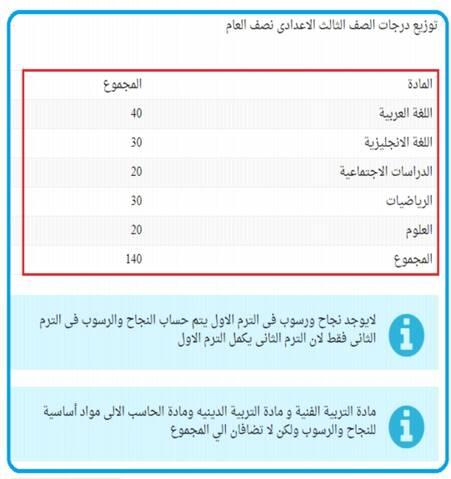How Does Night Vision Affect Security Camera Performance?
Night vision is crucial to how security cameras defend homes, businesses, and public places after dark. Without it, cameras would struggle to record quality pictures in low- or no-light circumstances, creating blind spots for attackers to exploit. Modern cameras employ new technology to increase visibility at night, making them dependable around the clock. Understanding how night vision works and what influences its performance enables users to select the best solution for their needs. Several criteria, including picture clarity and detection range, decide whether a camera provides effective protection in absolute darkness or dimly illuminated areas.

What Is Night Vision in Security Cameras?
Types of Night Vision Technology (Infrared, Color Night Vision, Thermal)
Night vision in security cameras is based on three primary technologies. Infrared (IR) employs invisible LED lights to illuminate dark regions, resulting in black-and-white video. Color night vision combines low-light sensors with visible light to allow cameras to capture images in natural hues even at night. Thermal imaging, a less frequent feature in consumer cameras, detects heat signatures rather than light, making it useful in complete darkness or fog. Each approach has advantages: infrared is less expensive, color night vision improves detail detection, and thermal works best in extremely low-light or occluded settings. Choosing the appropriate kind is determined by budget, environmental concerns, and security requirements.
How Infrared LEDs Work in Low-Light Conditions
Infrared LEDs generate invisible light, which bounces off objects and returns to the camera's sensor, allowing it to "see" in total darkness. When the camera senses low light levels, these LEDs turn on automatically. The reflected infrared light creates grayscale visuals that accentuate forms, motions, and contours. The number and brightness of LEDs influence how far the camera can catch clear nighttime imagery. Most consumer security cameras have infrared arrays that cover distances ranging from 30 to 100 feet. While colors are lost, IR LEDs provide consistent vision for detecting movement, suspicious activities, and possible dangers in darkness.
Key Differences Between Daytime and Nighttime Footage
Natural light dominates the surroundings during the day, resulting in clean photographs with brilliant colors, a broad dynamic range, and precise detail. At night, security cameras use artificial upgrades like infrared or low-light sensors, which diminish image quality. Nighttime video is often in black and white, with reduced clarity for distant objects. Overexposure can occur due to shadows, glare from headlights, or bright lighting. Faces and license plates may look less distinct than under daylight situations. Despite these restrictions, night vision may nevertheless offer useful surveillance by spanning the gap between absolute darkness and full daytime visibility, ensuring continual monitoring and safety.
How Does Night Vision Impact Camera Performance?
Image Clarity and Resolution in Darkness
Clarity at night is determined by the camera sensor's ability to analyze low-light information. Higher resolution sensors, such as 4K, may record finer details, but only when combined with powerful night vision equipment. In bad lighting conditions, even high-quality photographs may appear fuzzy or noisy. Color night vision enhances clarity by maintaining tones and eliminating guessing in distinguishing clothes or cars. Thermal imaging, while not particularly detailed in appearance, provides definite contours for detection. Overall, resolution decreases significantly in night mode, but upgraded lenses, bigger sensors, and enhanced IR illumination contribute to usable clarity for accurate security surveillance.

Detection Range and Field of View at Night
Night vision has a huge impact on a camera's ability to view far and wide. Infrared-based cameras often detect obvious movement within 30 to 100 feet, depending on the LED brightness. Premium variants with more powerful IR arrays or bigger sensors have an extended range of more than 150 feet. However, broader fields of view lessen the intensity of light per region, which can reduce clarity at the margins. Color night vision is dependent on ambient illumination; hence, performance varies by setting. Thermal imaging provides reliable detection across its range, independent of lighting. To eliminate blind spots, users must strike a compromise between vast coverage and effective nighttime range when selecting cameras.
Factors That Influence Night Vision Effectiveness
Many factors influence how effectively night vision works. Infrared light can be blocked by barriers such as buildings, trees, or glass, making camera location crucial. The number and strength of infrared LEDs directly affect visibility distance. Weather factors like fog, rain, and dust impair clarity by dispersing light. Ambient light sources, such as streetlights, can either boost detail in color night vision or produce glare that washes out film. Sensor quality is also important, as bigger sensors can collect more light. For example, a POE camera with advanced sensors and stronger IR LEDs can improve clarity. Finally, reflective surfaces may bounce infrared unevenly, creating bright spots. Optimizing placement, choosing higher-grade cameras, and adjusting settings help overcome these challenges.
Conclusion
Night vision is a key component of current security camera performance, allowing monitoring to continue even after natural light diminishes. Technologies such as infrared, color night vision, and thermal imaging all contribute to clear visibility after dark. While nighttime film can not always equal the depth and color of daylight recordings, advances in sensor quality and LED power have helped to close the gap. Camera location, environmental conditions, and range all have an impact on performance. Understanding these factors enables users to make educated decisions, such as picking systems that provide robust security throughout the day and night and lowering vulnerabilities during the darkest hours of the night.







